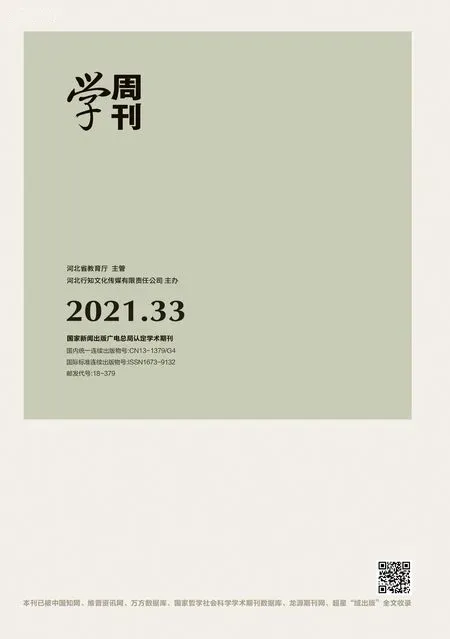Study of Three rules of Skopostheorie in Translating Scientific Texts
——Based on the translation of Pictures ofthe Future
(西安航空学院外国语学院710000)
Study of Three rules of Skopostheorie in Translating Scientific Texts
——Based on the translation of Pictures ofthe Future
姜敏浩
(西安航空学院外国语学院710000)
This thesis is based on the translation ofscientific texts taken from Pictures of the Future.The characteristics and understanding of the scientific texts causes many difficulties to the translation.Guided by skopos rule,coherence rule and fidelity rule,the author studies the application of three rules of Skopostheorie in translating scientific texts by taking typicalexamples from his own translation project.This translational experience is expected to shed much lighton the translation ofsimilar text types in future.
ⅣⅢⅤSkopostheorie;Sci-Tech Translation;skopos rule;coherence rule;fidelity rule
Ⅰ、An overview of Skopostheorie
Since the middle of the 20th century,western translation theories have been making significant breakthroughs,such as Nida's Social Semiotics Translation Theory and J.C.Catford's Systemic Functional Grammar Theory. Among so many translation theories,Skopostheorie proposed by functionalist theorists in Germany advocates something unique,which provides a new perspective to translation studies and practice.
Ⅱ、Applications of Skopostheorie in EC translation of scientific text
1.Guided by the skopos rule
The top-ranking rule for any translation is the“skopos rule”,which says that a translational action is determined by its skopos;that is,“the end justifies the means”(Reiss and Vermeer 1984:101).
The receiver is the main factor determining the target text skopos.There are many cases where relative literalism is precisely what the receiver needs,for example in the translation of a marriage certificate or driver's license,foreign legal texts for comparative purpose or directquotations in newspaper reports.
Ex.1
ST:Buildings literally gobble up energy.
TT:毫不夸张地说,建筑物极其耗费能源。
In the example,“gobble up”is translated into“极其耗费”.Looking up the dictionary,it is easy to get the Chinese meaning of“gobble up”——吞噬.However,if we use the original meaning of“gobble up”,itwillcause confusion to the Chinese reader——because“吞噬”is mostly related to human;however,the subject in ST is“buildings”,which cannot eat something.In order to make the target readers understand the sentence.We need to bring the basic meaning to them.
2.Guided by the fidelity rule
According to the fidelity rule,the TT must be coherent with the ST,or intertextually coherent.More specifically,the TT must provide the ST information and the translator's interpretation of it.The intertextual coherence should exist between source and target text,while the form it takes depends both on the translator's interpretation of the source text and on the translation skopos.One possible kind of intertextual coherence could be a maximally faithfulimitation ofthe source text.
Ex.3
ST:In his hand is a thin,palm-sized sheet of non-reflective glass that glows a pleasantwhite.
TT:他手里拿着一块手掌大小的Orbeos OLED磨砂面板,发着柔和的白光。
In this practice,“palm-sized”,“non-reflective”,“glows”,“pleasant white”find their counterparts in Chinese version“手掌大小的”“磨砂”“发着”“柔和的白光”.The interpretation made by the translator is embodied in the following two aspects:
First,the ST is an inverted sentence,which can avoid a long subject.The translator gasps the main idea of the ST and interprets it in statement form.
Second,“sheet”is put into“Orbeos OLED面板”.Actually,“sheet”only means“面板”.The source text readers,of course,know what the sheet is;however,the target reader may not know what the sheet refers to for lack of background knowledge.According to the translator's understanding of the whole passage,“sheet”refers to the Orbeos OLED sheet.
3.Guided by the coherent rule
The coherence rule specifies that a translation should be acceptable in a sense that it is coherent with the receivers'situation(Reiss and Vermeer 1984:113).Being‘coherent with'is synonymous with being‘part of'the receiver's situation(cf.Vermeer[1978]1983:54).What the translator can do,and should do,is to produce a text that is at least likely to be meaningful to target-culture receivers.In Vermeer's terms,the target text should conform to the standard of‘intratextual coherence'(Reiss and Vermeer 1984:109ff).This means the receiver should be able to understand it;it should make sense in the communicative situation and culture in which itis received.
Ex.3
ST:There,Osram made the topic of OLEDs a special focus of its presentation and pulled out all the stops by showing a variety of lighting installations and illumination techniques in order to give architects and light designers food for thought.
TT:在展会上,欧司朗将OLED灯作为展示重点,吸引人们纷纷驻足观看。同时也展示了多种多样的照明装置和照明技术,以便为建筑设计师和灯光设计师提供更多的灵感。
In this practice,the underlined sentence in ST is a very long sentence,which definitely shows the feature of English language---hypotaxis.Hypotaxis means the dependent or subordinate construction or relationship of clauses with connectives.However,the feature of Chinese language is parataxis,which is the juxtaposition ofsyntactic units without use of a conjunction.If the long sentence is not translated into short pieces without loosing information,it is hard and unaccustomed for the TT reader to understand.According to coherence rule and the features of Chinese and English language,the ST is putinto two Chinese completed sentences.
[1]Catford,J.(1965).Linguistic theory of translation.London:Oxford University Press.
[2]Nida.E.A.,Taber,C.R..(1969).The theory and practice of translation.Leiden:E.J. Brill.
[3]Nord.C.(2001).Translating as a purposeful activity:Functionalist approaches explained.Shanghai:Shanghai Foreign Language Education Pres.
[4]Vermeer,H.J.(1989).Skopos and Tanslationsauftrag-Aufsatze.Heidelberg:University.
[5]黄忠廉.变译理论.北京:中国对外翻译出版公司,2002.
[6]仲伟合,钟钰.德国的功能派翻译理论,1999.
(责编 张景贤)

